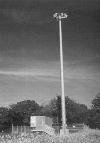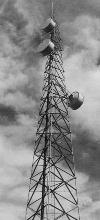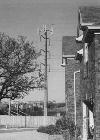 |
|
 |





 |
|
 |





The author would like to thank the following people for their assistance and support during the development of this thesis project:
To Peter C. Lowitt, AICP, Director of Planning & Economic Development, Londonderry, NH, for putting the challenge before me in June of 1996 to develop a report on wireless facilities during my internship. Little did I know then the impact the project would have on my thesis or on my professional development.
To Jon Issacs & Brian Harvey, Town of Fishers, IN, Department of Development,for allowing me to rummage through the town's archives, and for providing me with the opportunity to develop a case study with such similarities to my Londonderry experience. Special thanks to Brian, my roommate, for being an ear for me to vent my frustrations at, and helping me to set my nightly "goals."
To Bob Hawbaker & Glen Markegard, Bloomington, MN,Department of Planning, for providing me with a wealth of information they used in the development of their wireless ordinance, and for reviewing my own model regulations.
To Dave Schoen and John Cranor, my thesis advisors and two of the most knowledgeable professors at this university.
To the faculty and staff of the Department of Urban Planning for recognizing the work and effort I have put forth in completing this thesis in the form of the award for "Outstanding Undergraduate Thesis, 1997."
To the Northern New England Chapter of the American Planning Association, for recognizing my efforts in Londonderry, and for the honor of receiving an Award of Merit for my work.
Finally, to my parents, who finally realize I'm not an architect, and for their love and support (emotional and, of course, financial).